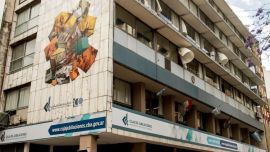Argentines have more than US$360 billion undeclared and beyond the reach of the tax authorities, according to an official estimate from the INDEC national statistics bureau.
A large part of the funds are stashed in banks abroad, off the Treasury’s radar, or outside the local banking system. Another chunk is in banknotes, mostly in safe deposit boxes, properties or financial investments abroad and in shares or debt bonds of governments or foreign companies.
In total, it all adds up to US$362.258 billion, a figure that is close to the entirety of national public debt, according to an INDEC report from the first quarter of this year – in banknotes or invested in funds and foreign currency, a good part of it directly undeclared and accumulating over the years via capital flight outside the local financial system.
That total is US$14.383 billion more than last year when it was estimated at US$347.875 billion.
Most of those assets are in foreign currency banknotes and deposits, overwhelmingly in dollars, in accounts abroad, in safe deposit boxes or "under the mattress" – US$243.511 billion, declared or otherwise, to be exact.
Last year all this added up to US$235.243 billion, an increment of US$8.268 billion while 2020 kicked off with US$227.73 billion as against US$153.309 billion in 2015 and US$74.282 billion in 2006.
All these numbers illustrate the extent of capital flight, which has been growing year after year. In part, this was a defensive attitude against aggressive norms (the famous legal insecurity) of different governments, ranging from pesofication of deposits, a compulsory bond swap, the corralito deposit freeze, ‘cepo’ capital controls and others.
In recent years, governments have attempted to grab back some of the undeclared funds. In 2016, during the Mauricio Macri administration, the so-called ‘blanqueo’ or tax whitewash managed to restore over US$100 billion to regularity.
The data emerges from the purchase and sale of foreign currency within the financial and banking system, the entry and exit of funds and capital via the Central Bank and the date supplied by foreign banks and financial institutions as to the assets held by Argentines in their countries.
by José Calero, Noticias Argentinas



















Comments